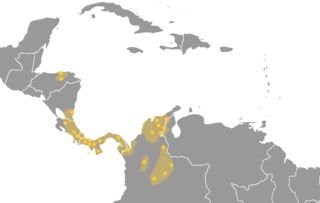
Bithynia was an ancient region, kingdom and Roman province in the northwest of Asia Minor, adjoining the Propontis, the Thracian Bosporus and the Euxine Sea. It bordered Mysia to the southwest, Paphlagonia to the northeast along the Pontic coast, and Phrygia to the southeast towards the interior of Asia Minor.
Nicomedes IV Philopator was the king of Bithynia from c. 94 BC to 74 BC. He was the first son and successor of Nicomedes III of Bithynia and Nysa and had a sister called Nysa.

The Chibchan languages make up a language family indigenous to the Isthmo-Colombian Area, which extends from eastern Honduras to northern Colombia and includes populations of these countries as well as Nicaragua, Costa Rica, and Panama. The name is derived from the name of an extinct language called Chibcha or Muysccubun, once spoken by the people who lived on the Altiplano Cundiboyacense of which the city of Bogotá was the southern capital at the time of the Spanish Conquista. However, genetic and linguistic data now indicate that the original heart of Chibchan languages and Chibchan-speaking peoples may not have been in Colombia at all, but in the area of the Costa Rica-Panama border, where one finds the greatest variety of Chibchan languages.

Apamea Myrlea was an ancient city and bishopric on the Sea of Marmara, in Bithynia, Anatolia; its ruins are a few kilometers south of Mudanya, Bursa Province in the Marmara Region of Asian Turkey.

The Boruca are an indigenous people living in Costa Rica. The tribe has about 2,660 members, most of whom live on a reservation in the Puntarenas Province in southwestern Costa Rica, a few miles away from the Pan-American Highway where it follows the Rio Terraba. The ancestors of the modern Boruca made up a group of chiefdoms that ruled most of Costa Rica's Pacific coast, from Quepos to what is now the Panamanian border, including the Osa Peninsula. Boruca traditionally spoke the Boruca language, which is now nearly extinct.

The Brunca Region is one of six socioeconomic regions in Costa Rica. It has a varied landscape, ranging from the coasts to interior mountains.
The Boruca language is the native language of the Boruca people of Costa Rica. It is one of the Chibchan languages. It is nearly extinct; it was spoken fluently by only five women in 1986, while 30 to 35 others spoke it non-fluently. The rest of the tribe's 1,000 members speak Spanish. The language is taught as a second language at the local primary school Escuela Doris Z. Stone. One can hear Bronka words and phrases mixed into Spanish conversations but it is extremely rare to hear prolonged exchanges in Bronka.

Spanish conquest of the Chibchan Nations refers to the conquest by the Spanish monarchy of the Chibcha language-speaking nations, mainly the Muisca and Tairona that inhabited present-day Colombia, beginning the Spanish colonization of the Americas.
Costa Rica's official and predominant language is Spanish. The variety spoken there, Costa Rican Spanish, is a form of Central American Spanish.

Bithynia and Pontus was the name of a province of the Roman Empire on the Black Sea coast of Anatolia (Turkey). It was formed during the late Roman Republic by the amalgamation of the former kingdoms of Bithynia and Pontus. The amalgamation was part of a wider conquest of Anatolia and its reduction to Roman provinces.
Térraba River, in the southern Brunca region of Costa Rica, is the largest river in that country.
Zipoetes II, also Zipoites II or Ziboetes II, possibly Tiboetes II was a ruler of Bithynia from 279 BCE to 276 BCE; his name, which survives chiefly in Hellenized forms, has three syllables.

Indigenous people of Costa Rica, or Native Costa Ricans, are the people who lived in what is now Costa Rica prior to European and African contact and the descendants of those peoples. About 114,000 indigenous people live in the country, comprising 2.4% of the total population. Indigenous Costa Ricans strive to keep their cultural traditions and language alive.
Meloë was a town in ancient Lycia, located near Cape Kilidonia.
Boteiras was a local prince of the region of Bithynia, and the father of Bas of Bithynia, first independent ruler of Bithynia, who governed fifty years, from 376 to 326 BCE.
Brunca or Brunka or Brunga was a town of ancient Bithynia on the coast of the Propontis, on the road from Nicomedia to Libyssa, 13 M.P. from the former and 12 M.P. of the latter.
Modra was a town of ancient Bithynia. According to Strabo, the town was situated in Phrygia Epictetus, at the sources of the river Gallus; but as this river flows down from the northern slope of the Bithynian Olympus, which there forms the boundary between Phrygia and Bithynia, Strabo must be mistaken, and Modra probably belonged to the southwest of Bithynia. It became the seat of a bishop; no longer a residential see it remains a titular see of the Roman Catholic Church. The district about Modra was called Modrene.
This page is based on this
Wikipedia article Text is available under the
CC BY-SA 4.0 license; additional terms may apply.
Images, videos and audio are available under their respective licenses.







